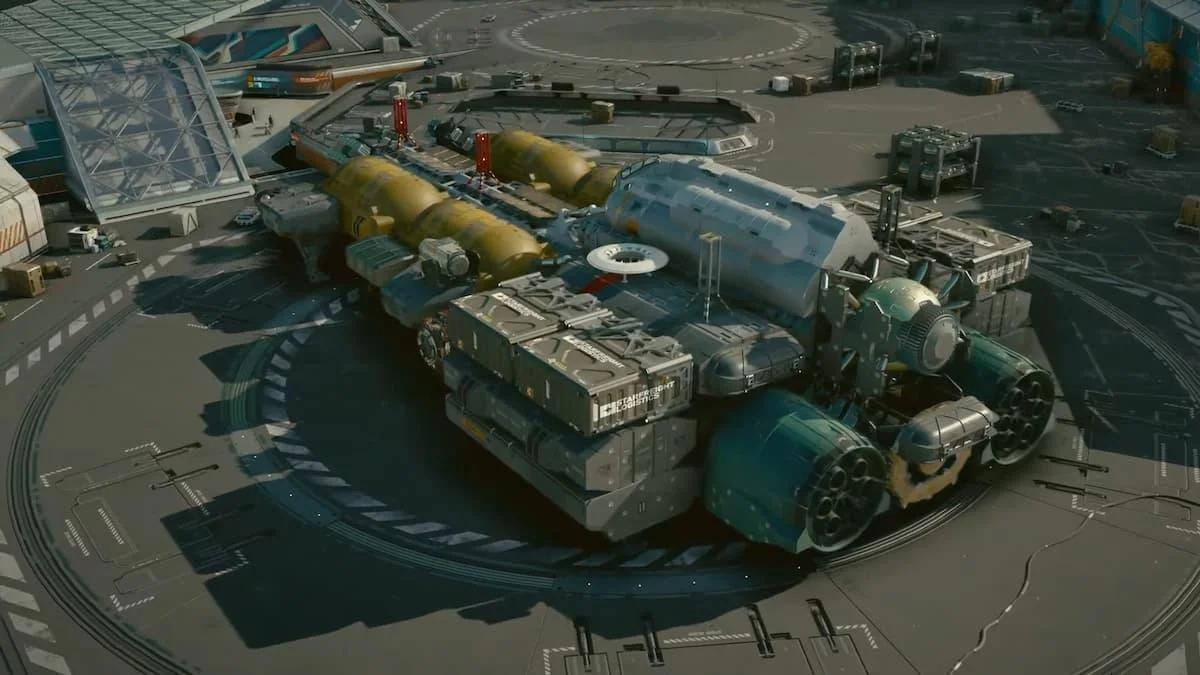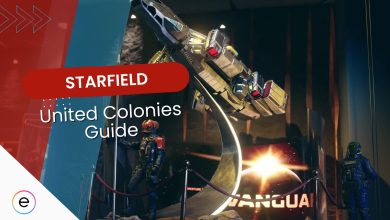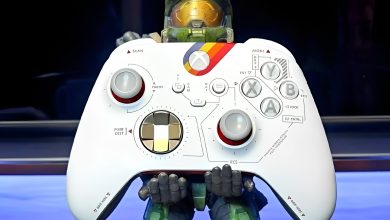Story Highlights
- Starfield is a landmark in the space-exploration genre and a magnificent Bethesda RPG, despite some prominent flaws.
- Starfield uses procedural generation for its immense open world. This although ensures a massive sandbox, creates critical flaws like high repetition and the inability to directly visit distant areas.
- The unrealistic expectations attributed to Starfield due to Bethesda’s frequent advertising and fans’ imagination led to these problems becoming a lot more noticeable.
It’s human nature to be fascinated by the unknown, and the vast expanses of space lie at the top of that list. I’m sure all of us have wished to travel and see the great void and its secrets for ourselves. Knowing a boundless space exists beyond our Earth is enough to fuel the sense of discovery. Regrettably, we cannot venture on such a journey yet, but at least we can fulfill our wishes in the virtual world of video games.
Space and sci-fi have always been immensely popular genres regardless of the medium, and games are no exception. The technological advancements in hardware have enabled the creation of games where you can freely roam around and explore the endless space and the many planets. Bethesda’s Starfield is the latest addition to this genre and despite some issues, it has delivered a phenomenal space-exploration adventure that players can’t get enough of.

Starfield Is An Undeniable Milestone In The Space Genre
Even before its release, Starfield felt like an undertaking of an enormous scale. The presence of about 1000 planets alongside the endless reaches of space to explore felt unimaginably vast. In addition, the promise of plenty of hand-crafted and unique content to ensure the game stays fresh felt too good to be true. Although some of it could’ve been better, Starfield is no doubt one of the most impressive games to release.
Bethesda RPGs are some of the best when it comes to writing, and Starfield is no different. The game brings a meaningful and impactful faction storyline with plenty of endearing characters. What’s more, it has a collection of pretty impressive side quests that showcase the developers’ creativity. It hasn’t been out for enough time now to explore it in its entirety, but from what I’ve seen so far the game is filled with some exceptional easter eggs.
The game’s highlight is the extent of customization it provides. Bethesda promised a highly customizable character creation system, and it seems they delivered on it. Still, I believe the game’s spaceship customization takes the take. It brings unreal depth to how you can customize and modify each component and then put them together in any hilarious way you wish. I’m sure we’ll be seeing a ton of creative spaceships very soon.

World Design and things to discover are the bread and butter of a space exploration game, and Starfield puts a unique spin on this. For essential and plot-relevant locations, Starfield features hand-crafted planets that are the stuff of brilliance. This makes up about 10% of the total area and for the remaining 90%, the game brings a unique approach to procedural generation to breathe life into the bulk of the planets.
Starfield has surely shaken the gaming community and is at the top of the trend list. Starfield right now and then Star Wars: Outlaws later, the space exploration genre has never been in a better place. And this is just the beginning, as I’m sure it will get a lot more popular now, with Starfield at its center. However, nothing is perfect and this brilliant title also brings some critical flaws. At least it facilitates modding that can circumvent some of these issues.
CONFIRMED: Modders can add NEW PLANETS, QUESTS & STORIES to #Starfield pic.twitter.com/7frRd9sCeQ
— Darrius Fears (@TheRealDfea) August 24, 2023
Procedural Generation Is A Double-Edged Sword
Some of Starfield’s issues stem from procedural generation, but before going into detail, what exactly is procedural generation? How it works is that several different layouts and interactable points are created and then pumped into an algorithm that selects and loads these layouts whenever you land on a planet. This RNG-based system intends to bypass the feeling of repetition and aims to create a newer experience for every subsequent planet.
You must be wondering, how exactly is it double-edged? The answer is that it is not possible to create a completely new environment for every planet; it will always circle between the pre-created layouts albeit in a random manner, and thus repetition cannot be avoided. You get an unimaginably gigantic world with procedural generation, but the feeling of redundancy can never be shaken off.
What’s more, the difference between procedurally generated and hand-crafted locations is extremely stark. This is another way the game’s RNG-based system works against it. Starfield’s hand-crafted locations are so full of love and dedication that the procedurally generated planets pale in comparison to them. This makes it a lot more noticeable. You are amazed by the important locations, but then the general planets start to feel dull.

Another important problem is how the randomization is incompatible with the game’s boundary system. Planets in Starfield are divided into pixel-sized tiles separated by a boundary. When you land on a planet, you have an invisible wall surrounding you that cannot be overcome. Of course, these segments are extremely large and you can’t encounter the boundary normally, It still exists and you need to fast-travel to a different area if you wish to proceed.
I’m not saying the planets should be seamless, the boundary wall serves to ensure the current data doesn’t exceed the hardware limitations. We now know the tiles are connected and the boundary can be removed with mods, but doing so causes the game to crash as it’s too much to process, so that is not a problem. My issue is how the procedural generation is randomized again when you travel to a different area on the same planet.
Tiles in Starfield are FINALLY confirmed as fully connected, which means the following and this is how the system actually works:
– In theory, you can run around a planet by selecting the next over tile after hitting a boundary
– Planet surfaces are real entities that actually… pic.twitter.com/NR5KkE1z9e— Ameer (@SynthPotato) September 4, 2023
Consider this scenario as an example. You land on a planet and wish to explore it and see a particular landscape in the distance. This landscape you wish to visit falls outside the boundary and is a background visual. To access this place, you have to disembark and fast-travel to the point you feel is closer to that particular location. However, when you do so, the randomization will kick in and the planet will become different than what it was before.
This can be quite fatal for the immersion. I don’t wish for the entire planet to be accessible at the same time, as this tile approach is a better one. However, if you wish to explore different segments of a planet, it should retain its configuration for the duration you are navigating its many corners. That would make the experience a lot more fluid and realistic. I appreciate the use of RNG to bring variations, but the inability to fully experience the locations you can see is quite troubling.
My largest issue with Starfield is the lack of contiguous procedural generation.
byu/Conserliberaltarian inStarfield
Unrealistic Expectations Leave Little Room For Error
This is not just limited to Starfield, or even gaming. Whenever a project starts gathering expectations of unrealistic proportions, it is bound to disappoint some people, as even the slightest mistakes would be immediately noted. It’s not possible to satisfy everyone, as each person has their wishes about how the project should be. Thus, it’s important to not form unreal expectations at all and be happy with what we receive.
This is what happened with Starfield too. It’s not a bad game in any way, it’s much better than a majority of others, but the unrealistic expectations people had led to the complaints we’re seeing. And it’s not like I can’t find any logical complaints, many people make a lot of sense when they demand something. It’s true people made a needlessly big deal out of Starfield, but I believe Bethesda played a considerable role in this, too.
The expectations some of y’all have for this game are absolutely unreasonable and you need to chill out.
byu/BunBun1289 inStarfield
Bethesda’s consistent advertising and statements about the scale of certain features created an unrealistic image in the fans’ minds. Starfield’s 25 years of production, the promise of 1000 planets with uniqueness, refined procedural generation, and extensive space travel with plenty to do; further fueled people’s imagination, and they started believing pretty grand things. They overlooked that it’s near impossible to create all unique planets for a world of this scale.
In my opinion, sticking to quality rather than quantity is vital. Bethesda’s incredible creativity is known to all and can be seen in Starfield’s hand-crafted planets too. Creating an unimaginably vast open world was bound to bring repetition, and many people would have been happier with a shorter but more unique world to explore. Still, I’m not against Bethesda’s decision to have an authentic space representation, it’s just that it created massive expectations.

Ultimately, Starfield is an immensely splendid project that delivers a lot of what it promised but misses some points that could have been tolerable if the expectations were not this high. Still, I’m pretty sure Starfield has a blindingly bright future. Because, As with all Bethesda RPGs, I know if nothing else modders have our back, and with Starfield’s inherent mod support, the game will surely reach new heights very soon.
Thanks! Do share your feedback with us. ⚡
How can we make this post better? Your help would be appreciated. ✍



